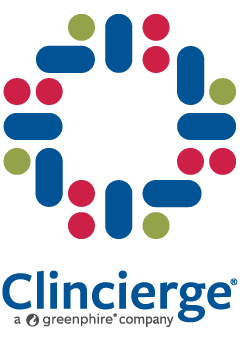Members of ethnic communities around the globe suffer from rare diseases unique to their demographic group. Their genetic makeup makes them more susceptible to hereditary issues which affect generation after generation. Designing a trial and selecting participants with diverse backgrounds that proportionally represent each demographic group is one of the first steps a sponsor can take to create a diverse and inclusive clinical trial. The benefits of understanding the cultural and genetic nuances of each group and mitigating any adverse effects of these new drugs may result in a safer and more effective treatment for both the trial participants and the greater world population.
Observed each May, Heritage Month is a time for various cultures to celebrate the history and traditions that make them unique, and to raise awareness of the rare diseases that impact their specific populations. May plays host to Jewish-American Heritage Month, National Asian American and Pacific Islander Heritage Month, and South Asian Heritage Month. Below we explore the background of each culture and some of the rare diseases that affect each group.
Jewish-American Heritage Month
In April 2006, President George W. Bush and Pennsylvania Senator Arlen Specter announced that Jewish-American Heritage Month would be celebrated in May of that year and every year moving forward. Thanks in part to the combined lobbying efforts of the Jewish Museum of Florida and the South Florida Jewish Community, May was set aside as a time to commemorate the contributions and achievements of Jewish Americans.
Currently, there are more than 30 genetic diseases prevalent in those of Jewish Heritage. A significant percentage of these qualify as rare diseases and most often affect those with Ashkenazi, Sephardi, and Mizrahi ancestry.
- It is estimated that 25% of individuals within these groups carry at least one of the primary recessive genetic disorders.
- The most common of these rare conditions is Gaucher disease a fatty cell disorder affecting the liver, spleen, and bone marrow.
- Gaucher disease is estimated to affect 1 in 40,000 people worldwide and this statistic jumps to 1 in 450 people among Jews of Ashkenazi descent.
- Other genetic diseases affecting this part of the population include cystic fibrosis, Tay-Sachs disease, familial dysautonomia, and spinal muscular atrophy (SMA).
National Asian American and Pacific Islander Heritage Month
Often referred to as APAHM, the path to this month-long cultural celebration began over 50 years ago. In the 1970s, congressional staffer Jeanie Jew approached Wyoming Congressman Frank Horton with the concept of creating a month to celebrate the contributions and accomplishments of Asian-Pacific Americans.
- Horton and California Congressman Norman Mineta introduced a bill to designate the first ten days of May as Asian-Pacific Heritage Week. One month later, Hawaiian Senators Daniel Inouye and Spark Matsunaga presented a similar bill in the Senate.
- In 1978, President Jimmy Carter signed a joint resolution appointing this week-long holiday.
- In 1990, President George H.W. Bush signed a bill extending the week to a month-long celebration.
- Kawasaki disease, an inflammatory disorder of the blood vessels, is more prevalent in those of Asian descent.
- Usually diagnosed in children, this illness is initially characterized by a high fever and rash on the face, hands, and feet.
- Kawasaki disease can seriously affect the coronary arteries, causing considerable long-term damage to the heart.
- Researchers are conducting studies to determine if Kawasaki disease is more genetically defined or based on the reaction of the Asian immune system to the attack.
South Asian Heritage Month
Observed primarily in Canada and the United Kingdom, South Asian Heritage Month celebrates individuals with ties to the South Asian countries of Afghanistan, Bangladesh, Bhutan, India, Nepal, Pakistan, Sri Lanka, and the Maldives.
- In Canada, the history of this celebration dates to the first Indo-Caribbean Canadian Heritage Day in 1988.
- In 1997, the Indo-Trinidadian Canadian Association was founded and started its similar celebration.
- The two groups joined together in 2000 to form the Council for Indian Arrival and Heritage Month, designating May to celebrate both the arrival of Indians in Guyana in 1838 and the first arrival of Indians in Canada in 1897.
- To avoid confusion with events related to the Indian Act and native Indians, the name of the celebration was changed to South Asian Heritage Month and signed into law in December 2001.
- The United Kingdom adopted the celebration in 2019 to coincide with the South Asian month of Sawan, the month of monsoons that signifies environmental renewal.
- Those of South Asian descent are at higher risk for many rare genetic disorders because of the propensity to marry within their cultural group and the local community.
- It is estimated that as many as 8% of Indians suffer from at least one rare disease.
- To date, over 450 of the 7,000+ known rare diseases are found in India.
- These diseases include lysosomal storage disorders, blood disorders such as hemophilia and sickle cell disease, thalassemia, and muscular dystrophies.
There are several key takeaways in understanding individual cultural nuances to create diverse and inclusive clinical trials:
- Grassroots communication efforts are needed to educate these tightly knit local communities.
- Outreach efforts are most effective when using trusted local community members like ministers and community group leaders to share clinical trial information.
- Involving local physicians within these communities who are familiar with specific demographic populations and their diseases is imperative.
- Ensuring an accurate representation of demographic groups in potential participant pools will benefit everyone involved – pharmaceutical companies, study sponsors, clinical trial participants, and future patients worldwide.
- Adhering to Food and Drug Administration (FDA) guidance on creating diverse clinical trials is vital for many reasons, including the accurate representation of unique demographic groups.
In conclusion, taking steps to understand individual patient populations’ cultural and genetic nuances is essential to successful clinical trial outcomes. Creating safe and effective treatments is a top priority for all stakeholders involved in the clinical trial process. However, it is the individual receiving the treatment, and future recipients, who will most directly benefit from the success of the research. Often, ethnic populations affected by rare disease are concentrated in remote global locations, meaning the barriers to trial participation are even greater for them.
Utilizing patient logistics management services enhances recruitment strategies by removing participation barriers and expanding access to clinical trials. Having a patient coordinator local to the patient, who understands their culture and their individual needs, provides an added layer of support to ensure completion of the clinical trial and improve retention.
Patient diversity in clinical trials is an ongoing effort across the industry. Each stakeholder has a responsibility to ensure the safety of both the trial process and resulting treatment for all involved. Clincierge aligns our services to support the needs of diverse populations. For us, this commitment to diversity begins at home. Clincierge fosters diversity, equity, and inclusion in all aspects of our company culture, and our Diversity, Equity, and Inclusion Committee continue to create opportunities for education and celebration.


